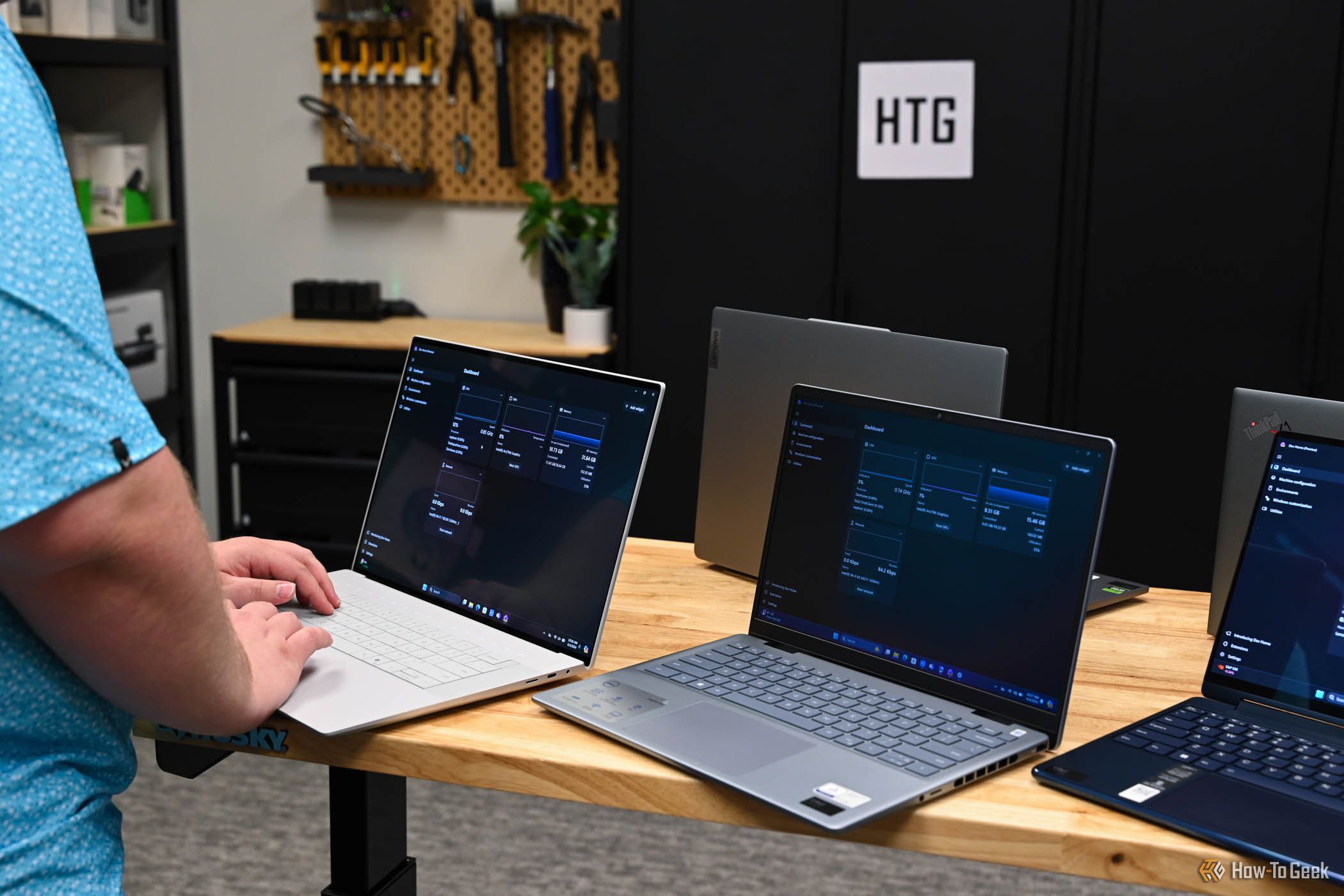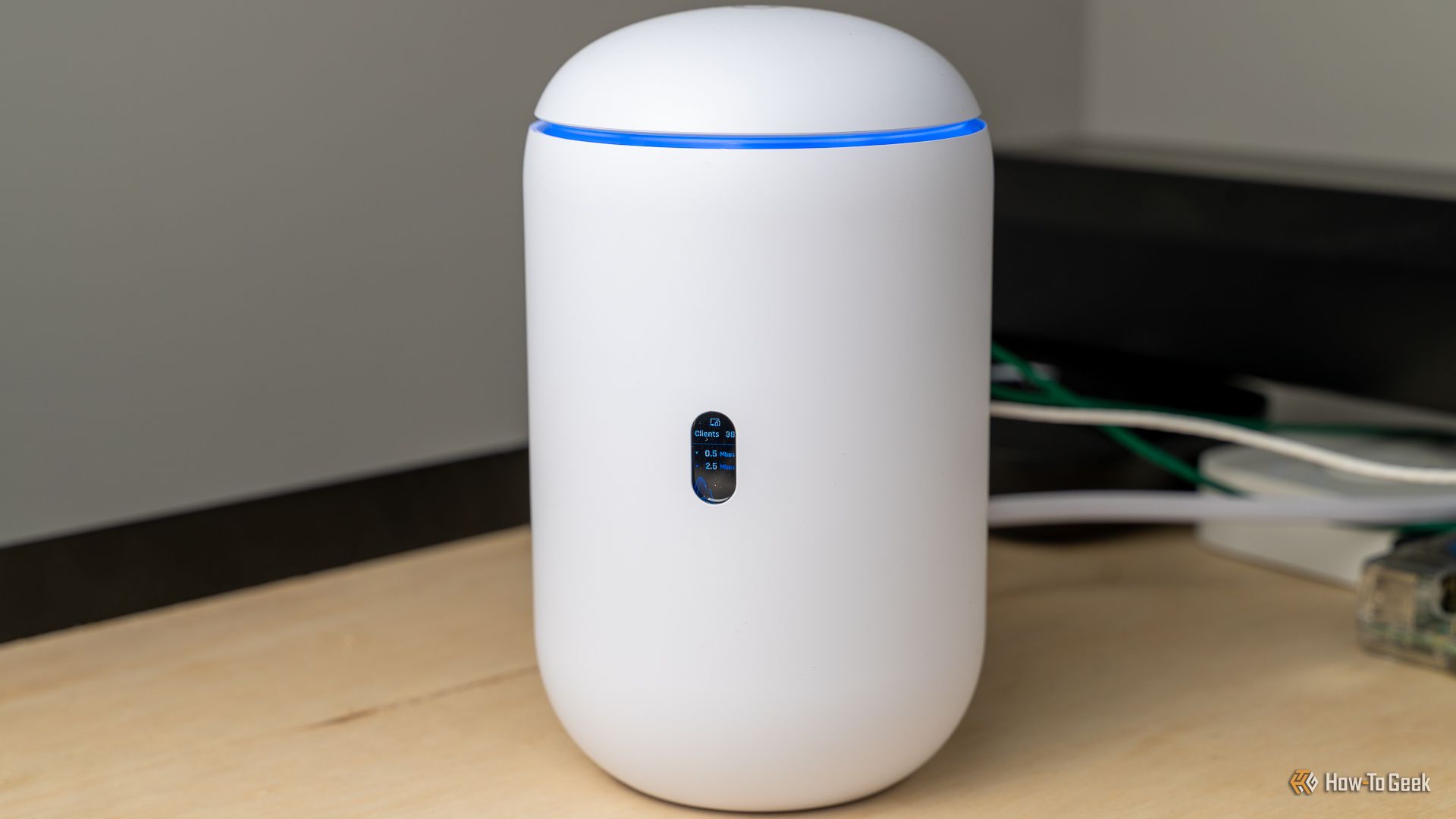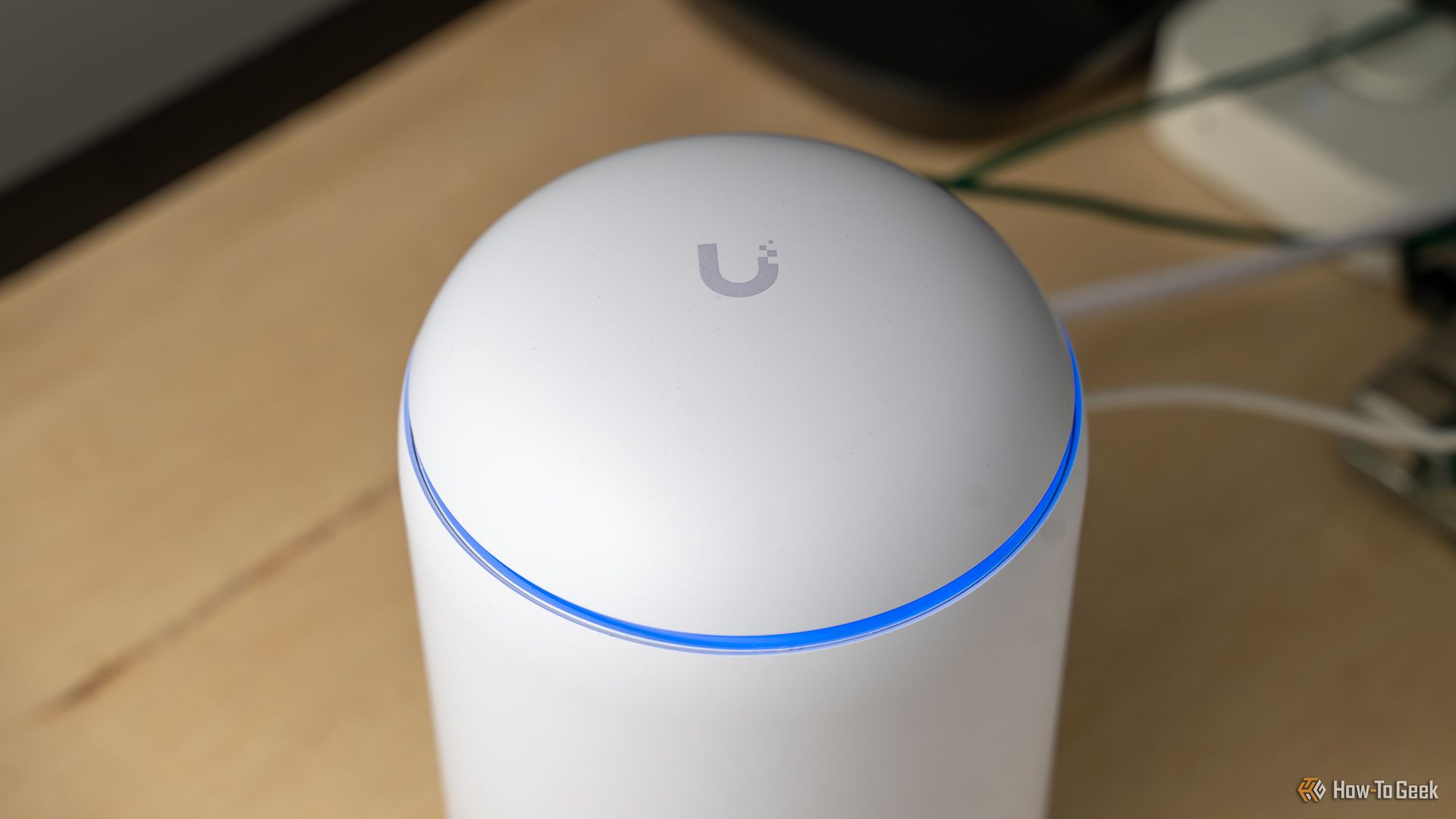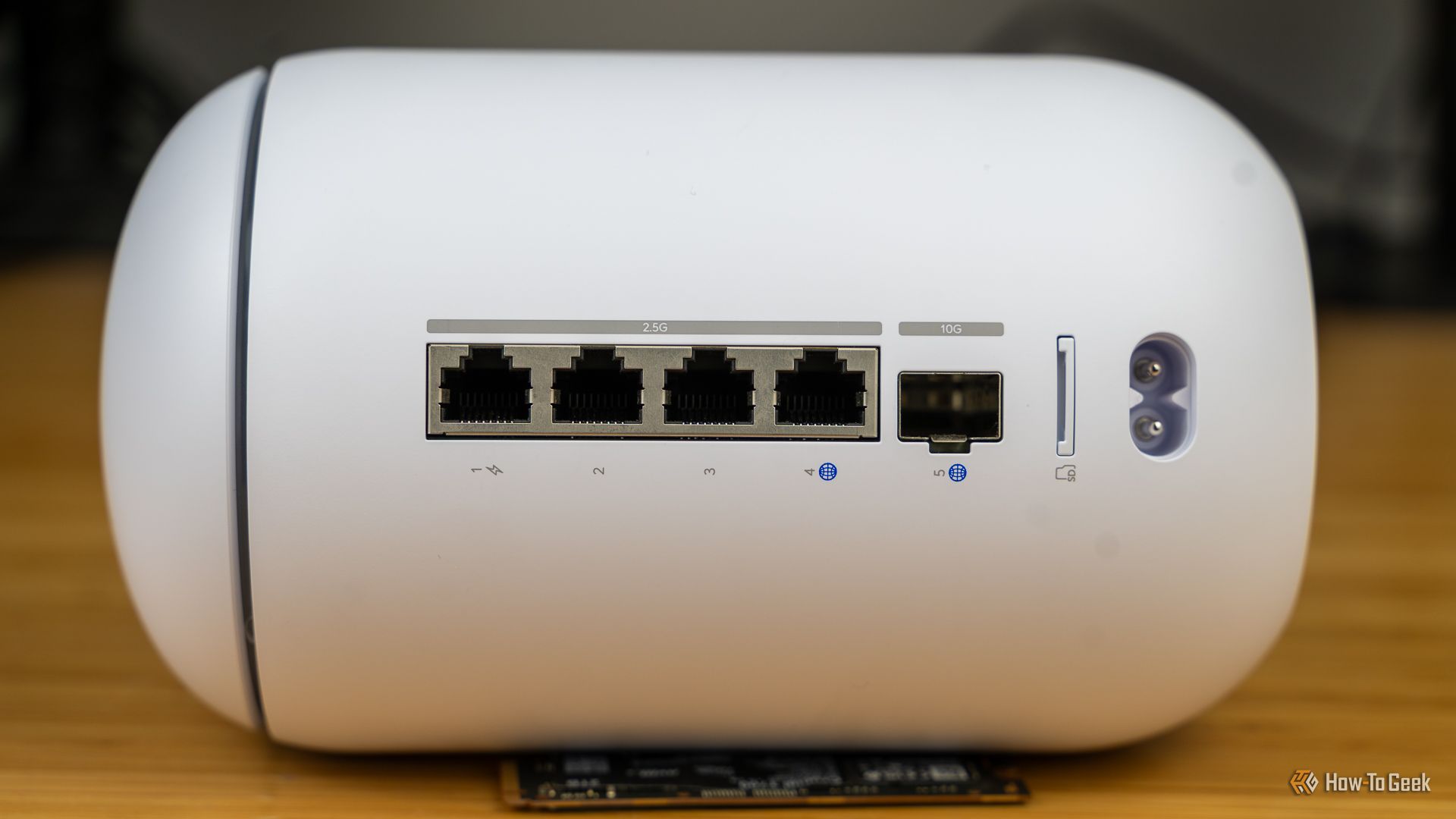Summary
- The Dream Router 7 offers an all-in-one Unifi setup, packing 2.5Gb Ethernet ports and Wi-Fi 7 support.
- Integrates with the entire Unifi ecosystem so you can use access points and cameras both new and old.
- At $279 with dual WAN capabilities, fully managed VLANs, NVR capabilities, a 10Gb SFP+ port, and more, the Dream Router 7 is a solid choice for any home networking setup.
Unifi launched the Dream Router 7 on February 25th, and I placed my order the following day. Delivering the full Unifi application stack, alongside Wi-Fi 7, the Dream Router 7 transformed my entire home networking setup—though there is one thing I wish it did better.


UniFi Dream Router 7
The Unifi Dream Router 7 is a full-fledged network appliance offering NVR capabilities, fully managed switching,a built-in firewall, VLANs, and more. With four 2.5G Ethernet ports (one with PoE+) and a 10G SFP+ port, the Unifi Dream Router 7 also features dual WAN capabilities should you have two ISP connections. It includes a 64GB microSD card for IP camera storage, but can be upgraded for more storage if needed. With Wi-Fi 7, you’ll be able to reach up to a theoretical 5.7 Gbps network speed when using the 10G SFP+ port, or 2.5 Gbps when using Ethernet.
- All-in-one Unifi setup
- Works as a NVR
- 6GHz Wi-Fi 7 support
- 4-port 2.5Gb managed Ethernet switch
- 15W PoE+ port
- 10Gb SFP+ port can be used as WAN or LAN
- No 4×4 MU-MIMO radios
- Can’t be used as an AP if you get another Unifi Cloud Gateway

See Our Process
How We Test and Review Products at How-To Geek
We go hands-on with every product to ensure it’s worth your time and money.
Price and Availability
The Unifi Dream Router 7 costs $279 and is available directly from Unifi’s web store.
All Unifi Features in One Compact Package
Not all Unifi gateways are created equal. The Unifi Express 7, for example, only runs Unifi Network and none of the brand’s other applications, like Protect, Talk, or Access.
The Unifi Dream Router 7, on the other hand, is full-featured and can handle any and all Unifi tasks. This means that you’ll be able to run not just Unifi Network, but also Protect, Talk, Connect, and Access with the Dream Router 7.
It also supports 30+ Unifi devices, while the Express 7 supports 30 and the original Express only supported four.
One of the main reasons that I wanted to switch to Unifi for my home network was the fact that it’s fully managed top to bottom. Through the Unifi Network app on the Dream Router 7, alongside its managed network switch on the back, I’m able to create VLANs and sophisticated firewall rules on my network.
This is truly one of the main reasons that I decided to pull the trigger on the Dream Router 7. I’m able to create multiple networks and VLANs so that way my IoT devices can be separate from my main computers, protecting them from a potential intrusion or hack.
All-in-all, the Dream Router 7 is one of the best ways to get into the Unifi ecosystem, since it delivers everything you’ll need to dive deep. Plus, it comes with a 64GB microSD card pre-installed for Protect recordings, which can be easily upgraded to more storage if necessary.
A Wi-Fi 7 AP With 6GHz Support
With other Cloud Gateways out there, like the Cloud Gateway Fiber, you might be wondering why I chose the Dream Router 7 instead of a separate Cloud Gateway and Access Point. The answer is simple: price.
The Cloud Gateway Max is $199, and the Cloud Gateway Fiber costs $279. Both of these units offer multi-gig networking, Protect, and more, just like the Dream Router 7.
However, the Dream Router 7 comes with a more powerful U7 Pro access point built-in. The Dream Router 7 delivers 2.4GHz, 5GHz, and 6GHz Wi-Fi 7 to your network with 2×2 MU-MIMO support. The U7 Pro does the same, but with lower antenna gain and max transmit power than what the Dream Router 7 has to offer.
The thing is, the U7 Pro costs $189, so even a Cloud Gateway Max with a U7 Pro would cost $388, and the Cloud Gateway Fiber with a U7 Pro would run $468. The Dream Router 7, on the other hand, costs just $279. That’s at least $100 off a Cloud Gateway with access point setup for similar overall performance.
This is one of the key reasons I picked the Dream Router 7, though the Express 7 did tempt me a bit since it also has the same wireless specs as the latest Dream Router. However, its lack of support for Protect and other Unifi apps did push me toward the Dream Router 7.
However, a drawback here is that the Dream Router 7 can’t be used as an access point if you get another Cloud Gateway from Unifi, like the Dream Machine SE.
The Dream Router 7 Is Designed for Multi-Gig Networking
The Dream Router 7 is Unifi’s all-in-one system that’s designed with multi-gig networking in mind.
On the back of this all-in-one router, you’ll find four 2.5Gb Ethernet ports and one 10Gb SFP+ port. Ethernet port four is marked for WAN, and the other three as LAN. While you can change the WAN from port four to port three or five (or use two of them together for dual WAN), the top two Ethernet ports are LAN only.
Port one, however, sets itself apart by offering 15W PoE+ so you can use it to power an access point, camera, or anything else that needs PoE right from the Dream Router 7.
I love that there’s both 2.5Gb and 10Gb networking built-in here, and I actually use it in my network already. While my WAN is only Gigabit, I have my servers connected to the Dream Router 7 over 2.5Gb Ethernet with the Unifi Flex Mini 2.5G switch, which is powered by the built-in PoE port.
This allows me to access my storage servers at multi-gig speeds on my Wi-Fi 6E and 7 devices around the house. I’ve actually tested this using OpenSpeedtest running on my server, and was able to achieve 2.1Gb/s download wirelessly on my OnePlus 13R, which supports Wi-Fi 7. My iPhone 15 Pro hit nearly 1.4Gb/s download on Wi-Fi 6.
Since the SFP+ port can function as either WAN or LAN, both Google Fiber and United (a local fiber company) will allow me to plug the fiber coming into my home directly into the Dream Router 7, bypassing any supplied modem. With Google Fiber offering an 8Gbps plan, and the Dream Router 7 supporting up to 10Gbps on the SFP+ port, I’m ready for whatever networking needs may come my way in the future.
The SFP+ port also allows you to uplink other devices to the Dream Router 7 at 10Gbps. A lot of Unifi’s other devices support 10Gb SFP+, including the UNAS Pro, UNVR, and many of their switches. Linking them to the Dream Router 7 at 10Gbps means you’ll be able to enjoy the fastest connection possible between the two, allowing for lower latency and faster data transfers where possible.
Unifi Protect Integration Makes the Dream Router 7 Ideal for Home Security Too
While the Dream Router 7 handles my entire network with ease, it does more than that. It’s also a NVR (network video recorder) to record and monitor cameras around your home.
Unifi sells their own Protect-branded cameras, which integrate seamlessly with the Dream Router 7. However, in a recent update, Unifi also allowed for any ONVIF-compatible camera to be brought into Protect. You won’t get AI detection with ONVIF cameras, but they’ll still record just the same.
Either route you go, the Dream Router 7 can easily handle keeping your home safe with its built-in NVR. It’ll officially support up to five HD cameras, two 2K, or one 4K. In reality, you can have more than this in your setup, but there’s just a chance of potential performance loss if you go above the official limit.
The included 64GB microSD card will record on motion detection only, though swapping it out for a larger capacity drive can net continuous recording if you’d prefer that.
With the one PoE+ port on the Dream Router 7, you can even run a single camera without any additional hardware, which is quite nice. Any more than that and you’ll either need PoE injectors or a separate switch.
I’ve personally gone the route of buying a 48-port 500W PoE Unifi switch secondhand. While these switches can run about $850 new, I was able to pay $250 used, and it’s been a great buy for my home as I already have multiple access points and cameras running on it.
No 4×4 Radios Is the Only Drawback
I absolutely love the Dream Router 7, and I’m very glad that it’s replacing my aging Amplifi Alien Wi-Fi 6 router. However, I am a little disappointed in the lack of 4×4 radios on the Dream Router 7.
The original Unifi Dream Router, which is no longer being offered now that the Dream Router 7 is out, had 4×4 MU-MIMO for both 2.4GHz and 5GHz. The Dream Router 7 steps back to 2×2 MU-MIMO for 2.4GHz, 5GHz, and 6GHz.
Why Unifi did this downgrade I’m not sure, and I wish they hadn’t. Having 4×4 delivers far better coverage capabilities when compared to 2×2, and it would have really pushed the Dream Router 7 to another level.
Should You Buy the Unifi Dream Router 7?
The Unifi Dream Router 7 is one of the best Wi-Fi routers on the market right now. Most other Wi-Fi 7 routers with 6GHz support are in the $200 to $300 range (with some Wi-Fi 7 systems going for upward of $2,000), but lock you into buying identical models to add extra access points. Likewise, most of these are only routers, without the ability to handle the extra things that the Dream Router 7 can, like acting as an NVR.
The Dream Router 7, on the other hand, works with all of Unifi’s entire lineup of products, new and old. I have my Dream Router 7 powering an older AC Pro access point, and I just picked up an AC Lite access point for $25 shipped to further expand my network. Yes, those are older standards and won’t give me Wi-Fi 7 speeds, but I don’t need Wi-Fi 7 speeds in the areas I’m installing them in.
If you’re looking for a solid, all-in-one networking setup that’s robust, has a great ecosystem of products, and a supportive community, then look no further than the Dream Router 7. I purchased mine the day after it came out, and I’ve not regretted it a single time, and I don’t think you will either.


UniFi Dream Router 7
The Unifi Dream Router 7 is a full-fledged network appliance offering NVR capabilities, fully managed switching,a built-in firewall, VLANs, and more. With four 2.5G Ethernet ports (one with PoE+) and a 10G SFP+ port, the Unifi Dream Router 7 also features dual WAN capabilities should you have two ISP connections. It includes a 64GB microSD card for IP camera storage, but can be upgraded for more storage if needed. With Wi-Fi 7, you’ll be able to reach up to a theoretical 5.7 Gbps network speed when using the 10G SFP+ port, or 2.5 Gbps when using Ethernet.












Leave a Comment
Your email address will not be published. Required fields are marked *